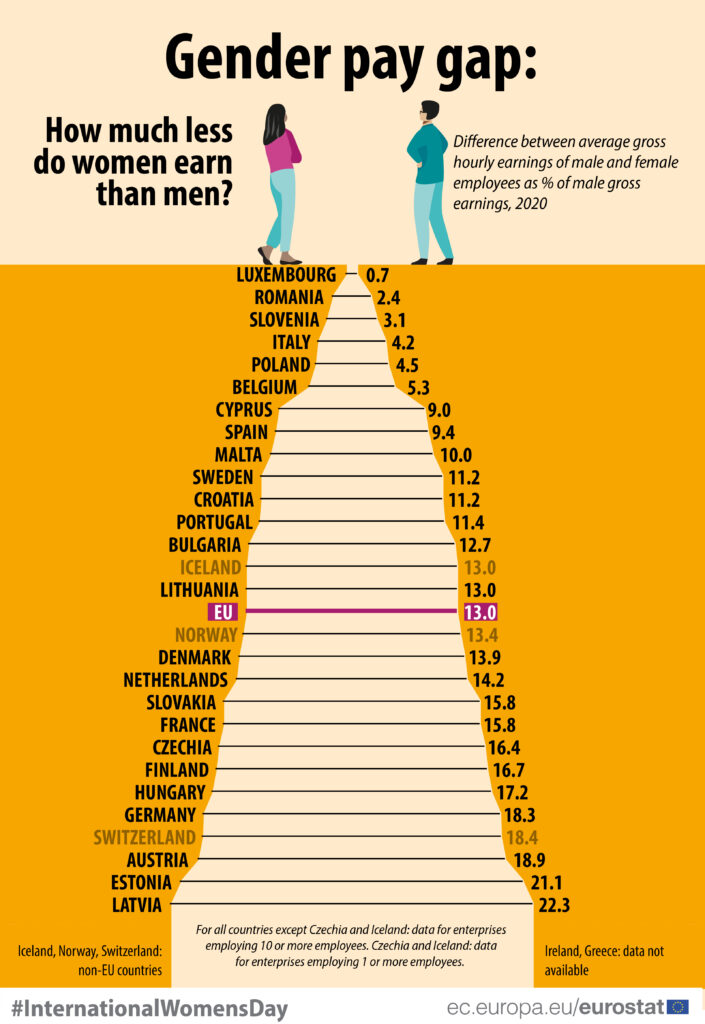According to Eurostat, the European Union’s statistics agency, Estonia has the second highest gender pay gap among the member states.
The unadjusted gender pay gap shows the difference between the average gross hourly earnings of men and women expressed as a percentage of the average gross hourly earnings of men.
The indicator is calculated for enterprises with 10 or more employees.
According to Eurostat, the EU’s official statistics agency, in 2020, women’s gross hourly earnings were on average 13.0 per cent below those of men in the EU. In the space of eight years, between 2012 and 2020, the EU gender pay gap was reduced from 16.4 per cent to 13.0 per cent.
The highest gender pay gap were observed in Latvia (22.3%), Estonia (21.1%), Austria (18.9%) and Germany (18.3%).
The differences were smallest in Luxembourg (0.7%), Romania (2.4%), Slovenia (3.1%) and Italy (4.2%).

For years, Estonia had the highest gender pay gap in the EU.
In 2020, Statistics Estonia, the country’s official statistics agency, said the gross hourly earnings of female employees were 17.1% lower than the gross hourly earnings of male employees and the “gap was narrowing”. Judging by the fresh data by Eurostat, the gender pay gap in Estonia is widening again.


Unless statistics compare the pay gap within the same company for the same position, it does not have credibility. If you just take an overall average, it might just mean that women and men tend to prefer different roles or different kinds of companies. You cannot compare the pay for a highly responsible role to a basic one.
So if the same company has two employees, one male and one female, in the same exact role with identical responsibilities but the female employee is paid 13% less (or any amount for that matter) – yes, that is outrageous.
But if statistics outline that a nuclear engineer is paid more than a cashier on average, why shouldn’t there be a gap?